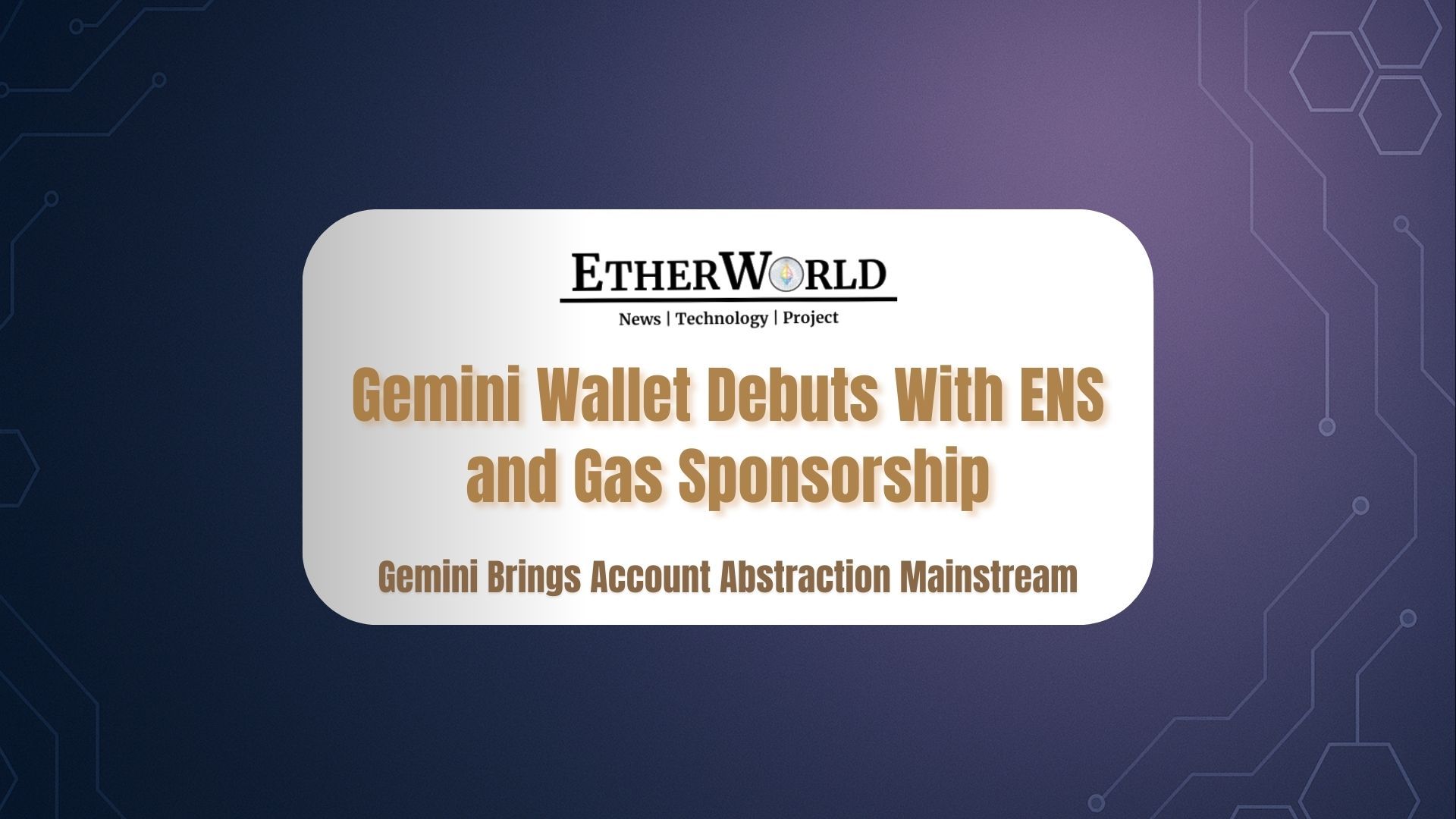Gemini launched the Gemini Wallet this week, an Account Abstraction smart wallet with a heavy modular backbone, gas sponsorship on major L2s, and built‑in onchain identity via ENS subdomains. Here’s the sharper version of the news with practical context users and builders actually care about.
What’s new
- Account Abstraction by default: seedless, programmable accounts, policy controls, session keys.
- 7,579 modules: granular building blocks for security, recovery, automation, and custom flows.
- Wagmi integration: drop‑in connector for React dapps.
- Onchain app: each user gets a Gemini ENS subdomain.
- Gasless UX: Gemini covers fees on Arbitrum, Optimism, Base, and Polygon.
How this likely works under the hood
- Smart account contracts: Your wallet is a contract that enforces rules—spending limits, guardians, 2FA, passkeys and session keys for specific apps.
- Bundlers and paymasters: Transactions get packaged and sponsored so users don’t touch gas by default on supported L2s. If sponsorship fails (quota, fraud checks, downtime), the flow should fall back to user‑paid gas.
- Modules as policy blocks: Each “module” plugs into the account to add capabilities-recovery methods, device linking, whitelists, social login or automation. Expect a default‑deny posture with explicit permissions to reduce risk.
- ENS subdomains: Human‑readable names mapped to your smart account; likely managed in a parent zone Gemini controls, with rules for renewal and portability that users should verify.
The answers to look for
- Recovery, not seed phrases: What’s on by default, passkeys, guardians, device recovery? How long does recovery take and what proofs are required?
- Gas sponsorship limits: Are there per‑day caps, chain‑specific limits, or abuse checks? What happens in high‑congestion moments?
- Portability: Can the smart account be controlled by another wallet later? Can the ENS subdomain move if the user leaves?
- Audits and permissions: Which modules are audited? Who can upgrade or pause them? Is there a timelock or onchain governance?
- Privacy: What data is collected to enable sponsorship and fraud detection? Are analytics opt‑out? Any KYC gating for perks like gasless or ENS?
- Regional access: Is sponsorship or ENS distribution limited per region or regulatory status?
Practical applications
- Consumer UX
- One‑tap sign‑ins with passkeys; no seed stress.
- Gasless mints, swaps, and app trials on L2s, perfect for first‑time users.
- Readable names via ENS subdomains for payments and social identity.
- Power users
- Session keys for bots and games; spending caps; app‑specific permissions.
- Automation modules for dollar‑cost averaging, recurring payments, or onchain subscriptions.
- Multisig‑like controls without clunky flows guardian approvals, time‑locked large transfers.
- Developers
- Faster onboarding, no fund‑your‑wallet step.
- Wagmi connector to integrate quickly; design flows around AA primitives like paymasters and session keys.
- Safer UX patterns out of the box: recoverable accounts, rate limits, policy guards.
Implementation notes for builders
- Start with the wagmi connector: Replace or add Gemini’s connector to your connect modal; test sponsored flows on Arbitrum, Optimism, Base, Polygon.
- Design for AA patterns:
- Prefer session keys for repeated actions (games, trading UIs).
- Use spending limits and intent‑like flows to reduce signature fatigue.
- Build fallbacks: show clear state when sponsorship fails and let users proceed with self‑paid gas.
- Test recovery end‑to‑end: Simulate device loss, rotate keys, verify guardian or passkey flows, and measure total steps/time.
- Respect identity: Resolve ENS subdomains in your UI; warn users when sending to non‑checksummed addresses; surface readable names in receipts.
Risks and trade‑offs to communicate
- Attack surface: More modules mean more code paths; prefer minimal enabled set and explicit permissions.
- Upgradeability: If contracts are upgradable, demand clarity on who holds keys, timelocks, and emergency procedures.
- Paymaster degen moments: Sponsorship may pause under load or policy; show deterministic fallbacks and user feedback.
- ENS control: Subdomains under a parent can be revoked or gated; confirm portability and renewal policy.
What to watch next
- Audit disclosures and bug bounty scope for the module set.
- Documentation on sponsorship limits, eligibility, and abuse prevention.
- Roadmap for open sourcing modules and third‑party module submissions.
- Metrics: dapp adoption via wagmi, gasless success rates, recovery completion times, and user retention.
Recomended Articles
- SEC Says "Liquid Staking Tokens Are Not Securities"
- Breaking: SEC Stops Treating Crypto Devs Like Criminals - What are the New Rules?
- Polygon’s POL Staking: Unlock Rewards, Airdrops and the AggLayer
- Linea Launches ETH Burn, Yield Rewards & Ecosystem Fund
- MetaMask’s “Stablecoin Earn” Goes Live with Aave
Disclaimer: The information contained in this website is for general informational purposes only. The content provided on this website, including articles, blog posts, opinions, and analysis related to blockchain technology and cryptocurrencies, is not intended as financial or investment advice. The website and its content should not be relied upon for making financial decisions. Read full disclaimer and privacy Policy.
For Press Releases, project updates and guest posts publishing with us, email to contact@etherworld.co.
Subscribe to EtherWorld YouTube channel for ELI5 content.
Share if you like the content. Donate at avarch.eth
You've something to share with the blockchain community, join us on Discord!








